- 13 years old
- Born on July 22, 1999
- Passed away on April 8, 2013
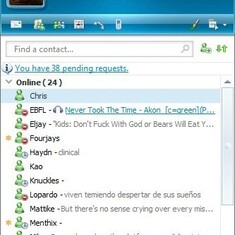
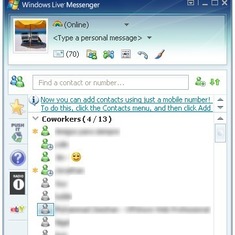
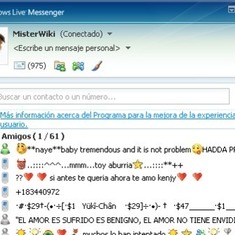
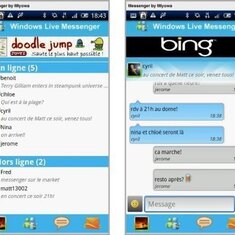
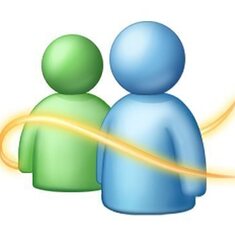
MSN Messenger (1999–2005)
Before the product was renamed Windows Live Messenger, it was named "MSN Messenger" from 1999 to 2006. During that time, Microsoft released seven major versions as follows. The first version of MSN Messenger Service, version 1.0 (1.0.0863), was released July 22, 1999. It included only basic features, such as plain text messaging and a simplistic contact list.[4] When it was first released, it featured support for access to America Online's AIM network. America Online continually tried to block Microsoft from having access to their service until eventually the feature was removed, and it has not re-surfaced in any later versions of the software.[5] AOL did this by exploiting a buffer overflow bug in AIM, which causes it to execute a bit of machine code sent by the server. When this code runs, it determines if the client is AIM and sends a message back to verify the client.[6] Since then, the software has only allowed connections to its own service, requiring a Windows Live ID (.NET Passport at that time) account to connect. Microsoft released the first major update, version 2.0 (2.0.0083), on November 16, 1999. It included a rotating advertising banner and the ability to customize the appearance of the chat window. It came as an install option for Windows Me. This version was followed the next year by version 3.0 (3.0.0080), which was released May 29, 2000. It included file transfers and PC-to-PC and PC-to-phone audio capabilities with Net2Phone and Callserve,[7] two of the larger VoIP providers.[8]
Along with the release of Windows XP came version 4.6 of MSN Messenger, on October 23, 2001. It included major changes to the user interface, the ability to group contacts, and support for voice conversations.[9] In this version, the client software was renamed from "MSN Messenger Service" to just "MSN Messenger," while the underlying service became known as ".NET Messenger Service". This version was only compatible with Windows 95, 98, ME, NT 4.0, and 2000, because Microsoft provided a scaled-down new program for Windows XP, called Windows Messenger. Version 5.0 of MSN Messenger was released on October 24, 2002. It was the first version that was allowed to be installed along with Windows Messenger on Windows XP.[10] It included UPnP (Universal Plug and Play) based file transfers, minor changes to the user interface artwork, and a Windows Media Playerinterface plug-in.[11]
Version 6.0 of MSN Messenger was released July 17, 2003. MSN Messenger 6.0 was a major overhaul of the whole platform, upgrading its simple text-based interface to include customizable elements such as emoticons, personalized avatars, and backgrounds. An update, version 6.1, focused on improvements to the conversation window, enabling users to hide the window frame and menu bar, and also the ability to change the theme color. The theme color could be set differently for each user. Another update, version 6.2, was released April 22, 2004, and it was the last version of the MSN Messenger 6 series. The most notable changes were a dedicated Mobile group for mobile contacts, a connection troubleshooter, and the Launch Site feature was renamed to Fun & Games.
MSN Messenger received a major upgrade to version 7.0 on April 7, 2005. This version brought wink features that were previously only available in threedegrees. This version also advertised items to sell to you including animated display pictures, emoticons and backgrounds. The contact list window style was also updated to match instant message windows. This version also introduced the Xbox Live Integration feature. This is the last version of MSN Messenger that runs on Windows 98 and Windows Me. This version also introduced digital ink and handwriting recognition support.
The last version of MSN Messenger before the name change, version 7.5, was released August 23, 2005. New features included the Dynamic Backgrounds feature and the "msnim" protocol handler, which allowed Web sites to provide links which automatically add a contact or start conversations. Additionally, a new Voice Clips feature allowed users to hold down F2 and record a message for a maximum of 15 seconds and send it to the recipient. The window for conversations was changed slightly with an added video button. This version also introduced the Windows Installer for its auto-update feature.
Version 8.0–8.5 (2005–09)As part of Microsoft's Windows Live effort, which rebranded many existing MSN services and programs, MSN Messenger was renamed "Windows Live Messenger" beginning with version 8.0.
The first beta of the newly renamed Windows Live Messenger, Beta 1, was released on December 13, 2005.[3] Major changes and additions included offline messaging, an option to change the color theme of the windows, separated send and search boxes, a word wheel search box in the main window, and additional details for contacts when hovering over their names in the contact list window.
The second beta of version 8.0, Beta 2, was released on February 26, 2006. The overall theme of this version was improved, fixing and improving several smaller places in the program. Major changes and additions included the introduction of Windows Live Contacts, the reintroduction of single file transfer, improvements to the "Add a Contact" dialog box, improved color themes, minor changes in the conversation window, and revert of the "Busy" status icon back to the normal dash icon.[13]
The final beta version, Beta 3, was released on May 2, 2006.[3] Major changes and additions included new icons for the program, PC-to-phone calling, an updated look for the Windows Live Call window, a new default display picture, the Windows Live Today window, improvements to the grouping of sequential messages from each contact, Rhapsodyintegration in the U.S., and an option for sounds to be edited and/or turned off.[14]
The official release of Windows Live Messenger version 8.0 was on June 19, 2006.[3] Although no notable changes were made between Beta 3 and the final version,[15] the change from MSN Messenger to Windows Live Messenger brought some additional changes, such as customization for the nicknames of individual contacts, timestamps on messages, the ability to see a contact's name only once if the same person writes multiple messages in a row, and color schemes for the entire application. The main authentication system, Microsoft Passport Network, was replaced with Windows Live ID at the same time. A refresh to version 8.0 was released on August 10, 2006.[3] It included audio and video improvements and fixed up minor bugs.[16]
The first update to Windows Live Messenger was previewed on October 30, 2006, with the release of Beta 1 of version 8.1.[3] No major changes were made, but several minor changes were included. These include the addition of the roaming identity feature (so that the same user's display name and picture would appear on any computer), a new contact card appearance, a "recently used" list for the emoticon, wink, display picture and background menus, an SMS phone book in the main menu allowing the association and editing of a phone number to the contact and allowing text messaging to a contact, a "sign out" button, a "report abuse" option in the help menu, interoperability with Yahoo! Messenger, and improvements to user status on Windows Vista[17]
A minor update, the Windows Live Messenger 8.1 Beta 1 Refresh, was released on December 13, 2006,[3] and fixed bugs that were causing some people to be unable to sign in and others unable to see their contact list.[18]
The final version 8.1 was released on January 29, 2007.[3] No changes were made from the Beta 1 Refresh.[19] All versions of Windows Live Messenger below version 8.1 were rendered obsolete on September 12, 2007, due to a security issue identified when a user accepts a webcam or video chat invitation from an attacker.[20]
On September 12, 2007, the Windows Live Messenger blog posted a fix that resolved a security problem. It reported of a security vulnerability in versions of Messenger older than 8.1, that the released fix would resolve. This led to an auto-update being released to all older versions. Versions running on Windows 2000 and below were required to update to a new version of MSN Messenger 7.0, and versions running on Windows XP and above were required to update to Windows Live Messenger 8.1.[20]
On August 27, 2009, the Windows Live Messenger blog posted that due to a security problem, all users of versions 8.1 and newer need to update to the latest version, 14.0.8089. The mandatory upgrade requirement would be fully phased in by late October 2009 and began on September 15, 2009.
The first beta of Windows Live Messenger 8.5, Beta 1, was released on May 31, 2007.[3] An update was released on June 21, 2007, to test updates being installed by Microsoft Update. This version required Windows XP SP2, compared to previous versions requiring Windows XP SP1. It was the first version to be installed in a "Windows Live" folder under "Program Files," with the shortcuts placed in a "Windows Live" folder in the Start Menu.
Major changes and additions in Beta 1 included a new installation program in conjunction with the release of Windows Live 2.0, a new look for all of its windows that matches the aesthetic styles of Windows Vista,[21] a new "bunny" emoticon,[22] and integration with Windows Live OneCare Family Safety.[23] Beginning with this version, updates could be downloaded and installed through Microsoft Update.
The second beta of Windows Live Messenger 8.5, Beta 2, was released on September 5, 2007.[24] Several issues were fixed in Beta 2, but no significant changes were applied. Compared with the first beta, the build does not say "Beta" on the top of the window, although developers had noted that it was not the final release. The new Windows Live Installer, which is used to install Windows Live Messenger 8.5 Beta 2, does not run on Windows Server 2003.
The final release of Windows Live Messenger version 8.5 was released on November 6, 2007, and it introduced no major changes.[25]
Version 14.0–16.4 (2009–2012)[edit]Windows Live Messenger 2009 was originally designated version 9.0, it was later assigned the technical version number 14.0, in order to be unified with the other Windows Liveprograms and Microsoft Office programs.
In a presentation to the Georgia Institute of Technology's IEEE Student Branch, Microsoft employee Andrew Jenks reported that the Messenger team had been working on multi-person audio/video chat, and they are also attempting to create interoperability with AIM/XMPP/ICQ. There is a basic internal version that works with XMPP already.[26] However, these features were not seen in any versions of Windows Live Messenger 2009.
Microsoft sent an invitation to participate in the Windows Live Messenger "9" beta program to Microsoft Connect members on November 20, 2007; a week later, Microsoft began sending out emails welcoming them to the Windows Live Messenger "9" beta program for the first release, known as Beta 0.
A fan site for Windows Live Messenger, Mess.be, claimed to have a new build of Windows Live Messenger "9" on August 11, 2008, and published screenshots along with a brief summary of new features. The screenshots featured a new user interface design matching the "Wave 3" design in development by Microsoft. The images were later removed by the site after a DMCA notice was received.[27] The installer for the same build was leaked through private forums on August 23, 2008. It would later be discovered this build was a preview of Milestone 2, or M2.
News web site LiveSide published an article on September 4, 2008, with screenshots of M2 of the newly minted "Windows Live Messenger 2009," which had become version 14.0 instead of 9.0 as previously expected. LiveSide summarized its new features, including protection against messaging spam, the ability to stay signed into the application from several computers (referred to as "Multiple Points of Presence Support"), animated GIF files in the photo area, per-contact customized sounds for various user actions, and clickable URLs in the status area.[28]
Microsoft began the official beta program for Windows Live Messenger 2009 on September 17, 2008, when it released a new beta officially known as Windows Live Messenger 2009 Beta (Milestone 3, Build 14.0.5027.908), which was made available to the general public as a free download. The ability to submit feedback, however, was restricted to select participants of the Microsoft Connect closed beta program.
Notable changes in Milestone 3 include a new revamped and refined user interface to follow suit with the rest of the Windows Live "Wave 3" design, the ability to set a "Scene" by customizing the background image and color of the contact list, and the display of these scenes in conversation windows for improved contact identification and window management.
Milestone 3 also brings a new "Groups" feature that allows users to create a continuous group conversation between select contacts, newly redesigned status icons which now resemble small gems rather than the previous "Messenger Buddy" icons, a new default "Favorites" category in which you can place your favorite contacts for easy access to them, a new Photo Sharing utility that allows contacts to quickly and easily browse photos together, and a "What's New" section at the bottom of the contact list to outline recent contact updates. Display pictures have been moved over to the left side of conversation windows, and new colorful borders appear around display pictures to display the current status of that contact. Milestone 3 is the first version of Windows Live Messenger to use the standard window frame on Windows Vista in accordance with the user experience guidelines.
Several features were removed in version 9.0 however, such as the ability to use add-ins, the ability to transfer files when the recipient is signed in as offline, the "Be right back," "Out to lunch," and "In a call" status options,[29] the Go to my space button, the ability to adjust webcam settings during a video call, the Send button,[30] some games (depending on your localization) and integration with Windows Contacts.[31] Other features were replaced, such as Sharing Folders[32] (replaced by integration with Windows Live SkyDrive) and background sharing (replaced by the "Scene" feature).
On December 15, 2008, Windows Live Messenger 2009 RC (Build 14.0.8050.1202) was released together with the other Windows Live Wave 3 software applications, now renamed as Windows Live Essentials.[33] This version saw a removal of the custom sign-in sound feature however it is still possible to select a sound for other individuals, as well as changes to how the background image chosen is applied to the conversation windows. This build also included over 200 bug fixes including the "Custom Emoticon Bug" and saving of pictures when using the Photo sharing feature. On January 7, 2009, the same build was released as the final version of Windows Live Messenger 2009.[34]
The last QFE update for Wave 3 was released on May 12, 2010, and saw the removal of some features from Windows Live Messenger. Specifically, the ability to independently show only your own webcam or your contacts' webcam (one way webcam) and without an audio call is gone.[35] It is only possible to start a video call which starts the webcams of both people communicating and which also automatically starts audio calling. Also removed is the ability to import and save/export instant messaging contacts to and from .CTT files.[36]
On June 14, 2012, Microsoft has made the update from 2009 to 2011 mandatory for those using Windows Vista or 7. 2009 continues to be usable for those still running XP.[37] This can be circumvented by running Windows Live Messenger in Windows XP compatibility mode, thus making it believe it is running on Windows XP.[38]
In late March 2010, a beta of Windows Live Essentials Wave 4 was leaked onto the internet and has since spread to various BitTorrent networks, which included a private beta build of Windows Live Messenger Wave 4. However, as the software was designed for private beta testing, non-beta testers cannot sign into this leaked build.[39]
The new software features a revamped interface which brings the "What's new" section of Windows Live to the new "social pane", similar to the way a social networking site presents updates. Among the new features are tabbed conversations, a redesign of the old emoticons, integration of Bing results, built-in video message support, HD video chat, in-line commenting of social updates, a new social photo viewer that supports commenting (for Facebook and SkyDrive photos), badges support, synchronised status updates, availability by categories, as well as integration with Facebook chat. However, several features had also been removed from the previous version, such as the removal of display names, handwriting tool,[40] one-way webcam requests and import/export of instant messaging contacts feature. The "Wave 4" release of Windows Live Essentials, which includes Messenger, also dropped compatibility with Windows XP and only runs on Windows Vista or Windows 7.[41]
The new Windows Live Messenger for the iOS became available on the App Store on June 21, 2010, in addition to other mobile versions of Windows Live Messenger for Windows Phone, BlackBerry, and Symbian mobile platforms.[42]
On June 24, 2010, a public beta of Windows Live Messenger Wave 4 was released as part of the new Windows Live Essentials beta.[43] A "beta refresh" of Windows Live Messenger Wave 4 was released on August 17, 2010, as part of an upgraded Windows Live Essentials beta.[44] The final version of Windows Live Messenger 2011 (Wave 4) was released on September 30, 2010.[45] On the same date, a version of Windows Live Messenger for Zune HD also became available.[46][47]
On August 7, 2012, Microsoft delivered a new version of the Windows Essentials 2012 suite, which includes Windows Live Messenger 2012.[48][49]
Discontinuation[edit]On November 6, 2012, Microsoft announced that Messenger and Skype services would merge in the first quarter of 2013. According to Tony Bates (president of Skype Division at the time), Messenger users could sign into Skype using their Microsoft accounts, access their Messenger contacts and communicate as usual.[50][51] On January 8, 2013, Microsoft emailed Messenger users and informed them that with the exception of mainland China, the Messenger service would stop working on March 15, 2013, and users would not be able to sign in.[52]
On February 15, 2013, ZDNet wrote the discontinuation email was only sent to one percent of Messenger users, a test group.[53] On the same day, Microsoft announced its plans to phase out Messenger: The process would start on April 8, 2013, with English users and would end on April 30, 2013; Messenger would remain available in mainland China.[54]According to ZDNet, this might only apply to the ability to sign in with Messenger client; Microsoft would keep its Messenger service running for another year.[53] "Windows Live Messenger Upgrades to Skype," as they were referred to by Microsoft, started on April 8, 2013. This transition took place language by language. Brazil was the last country to be "upgraded," on April 30.
Chinese Messenger users received mail from Microsoft in August 2014, containing an announcement that Messenger service in China would end on October 31, 2014; users were advised to migrate to Skype and receive free credits.[55][56]
Invite others to Windows Live's website:
- Leave a tribute A tribute is a short message in memory of Windows Live or a few words of support for those close to him.
- Share a story Share the brightest, most memorable moments of his life.
- Add photos Import and share photos of your loved one from your device or social media.
- Add videos Import videos from your device, YouTube and other sources.
- Add music Add Windows Live's favorite songs for background or gallery listening.

